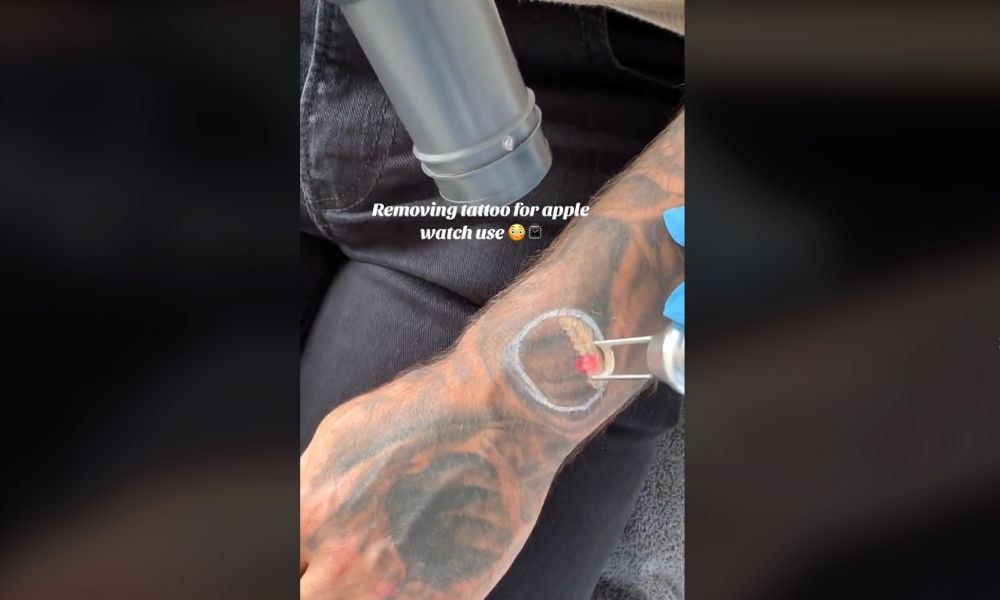Tattooed Apple Watch User Resorts to Laser Removal to Fix Pulse Detection Issues

Toggle Dark Mode
If you have an Apple Watch and are thinking of getting a wrist tattoo, or if you have a wrist tattoo and are thinking of getting an Apple Watch, you should note that the tattoo may prevent the Apple Watch from properly detecting your pulse. There is a solution to this, but it will cost you both money and a bit of pain.
The Apple Watch, like other wrist-worn devices, relies on light to gather data about the wearer’s heart activity. Unfortunately, the device’s wrist-detection feature gets confused by how tattoos reflect the green and infrared light emitted by the Apple Watch.
At least one Apple Watch user with a wrist tattoo has decided to undergo laser tattoo removal. The person’s tattoo sleeve covered their entire wrist, causing the Apple Watch Sensor to Fail.
A 15-second TikTok post by cosmetic nurse Maryam Khatibi on May 24, shows the laser treatment being performed on the outside of the person’s wrist, all within a temporary circle drawn on the wrist. The video shows how the laser vaporizes the tattoo. The video has so far received more than 3.5 million views on the social media service.
Khatibi told Newsweek that it took four laser sessions to remove the tattoo, costing $418 (380 euros).
The problem tattooed Apple Watch owners have had with the device operating properly has been around almost as long as the Apple Watch has been available.
The problem lies in the way that the Apple Watch measures a user’s blood oxygen level and pulse, as it uses a process called photolethysmography. The Apple Watch shines infrared and green lights onto the wearer’s skin, to allow sensors in the watch to detect blood flow.
Apple explains what happens in a support article:
This technology, while difficult to pronounce, is based on a very simple fact: Blood is red because it reflects red light and absorbs green light. Apple Watch uses green LED lights paired with light?sensitive photodiodes to detect the amount of blood flowing through your wrist at any given moment. When your heart beats, the blood flow in your wrist — and the green light absorption — is greater. Between beats, it’s less. By flashing its LED lights hundreds of times per second, Apple Watch can calculate the number of times the heart beats each minute — your heart rate.
Infrared light is used for background monitoring and to notify users of heart rate changes when needed. Green light is used to monitor heart rate during workouts and “Breathe” sessions.
Apple also warns:
Permanent or temporary changes to your skin, such as some tattoos, can also impact the performance of the heart rate sensor. The ink, pattern and saturation of some tattoos can block light from the sensor, making it difficult to get reliable readings.
Some users who have a tattoo sleeve on their usual watch-wearing arm have simply moved the Apple Watch to the opposite wrist (If that arm doesn’t also have a sleeve, of course). Users can also connect their Apple Watch via Bluetooth to a chest strap for accurate monitoring during workouts.








